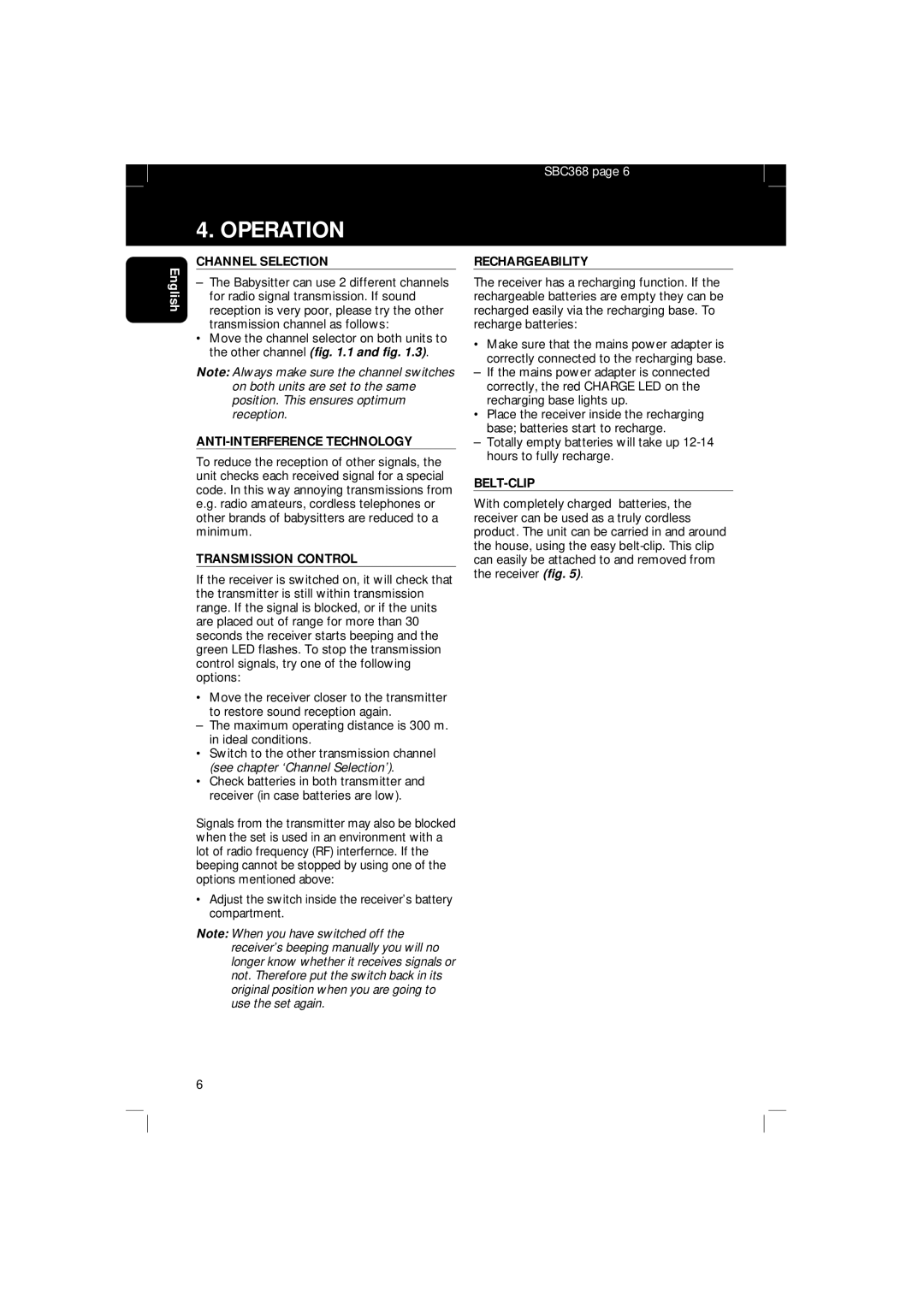
SBC368 page 6
4. OPERATION
English
CHANNEL SELECTION
–The Babysitter can use 2 different channels for radio signal transmission. If sound reception is very poor, please try the other transmission channel as follows:
•Move the channel selector on both units to the other channel (fig. 1.1 and fig. 1.3).
Note: Always make sure the channel switches on both units are set to the same position. This ensures optimum reception.
ANTI-INTERFERENCE TECHNOLOGY
To reduce the reception of other signals, the unit checks each received signal for a special code. In this way annoying transmissions from e.g. radio amateurs, cordless telephones or other brands of babysitters are reduced to a minimum.
TRANSMISSION CONTROL
If the receiver is switched on, it will check that the transmitter is still within transmission range. If the signal is blocked, or if the units are placed out of range for more than 30 seconds the receiver starts beeping and the green LED flashes. To stop the transmission control signals, try one of the following options:
•Move the receiver closer to the transmitter to restore sound reception again.
–The maximum operating distance is 300 m. in ideal conditions.
•Switch to the other transmission channel (see chapter ‘Channel Selection’).
•Check batteries in both transmitter and receiver (in case batteries are low).
Signals from the transmitter may also be blocked when the set is used in an environment with a lot of radio frequency (RF) interfernce. If the beeping cannot be stopped by using one of the options mentioned above:
•Adjust the switch inside the receiver’s battery compartment.
Note: When you have switched off the receiver’s beeping manually you will no longer know whether it receives signals or not. Therefore put the switch back in its original position when you are going to use the set again.
RECHARGEABILITY
The receiver has a recharging function. If the rechargeable batteries are empty they can be recharged easily via the recharging base. To recharge batteries:
•Make sure that the mains power adapter is correctly connected to the recharging base.
–If the mains power adapter is connected correctly, the red CHARGE LED on the recharging base lights up.
•Place the receiver inside the recharging base; batteries start to recharge.
–Totally empty batteries will take up
BELT-CLIP
With completely charged batteries, the receiver can be used as a truly cordless product. The unit can be carried in and around the house, using the easy
6
